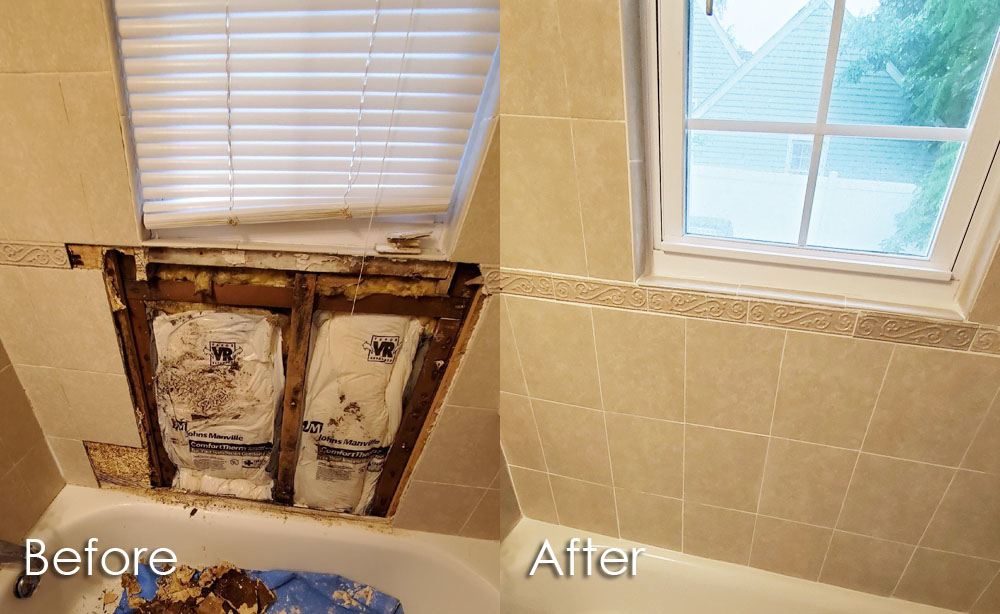Bathroom Water Damage - Ways To Prevent This Happening
Bathroom Water Damage - Ways To Prevent This Happening
Blog Article
Right here in the next paragraph you can get some extremely good expertise on the subject of How to Fix a Water Damage Bathroom.

The bathroom is incredibly prone for wet accumulation and possible water damage because of the constant use of water in it. This post supplies simple assessment strategies to help discovering water damages threats.
The frequent use of water in the washroom makes it extremely susceptible for damp buildup and also potential water damage. By checking it consistently, you can reduce water related damages.
The complying with collection of examinations is easy to carry out as well as must be done as soon as in every 3 months in order to keep your bathroom in good shape as well as to avoid prospective water problems brought on by the bath tub, the shower, pipeline joints and plumbing, sinks, cabinets, and the toilet
Do not overlook doing these assessments and also be detailed while executing them. Remember that these straightforward examinations can conserve you a great deal of cash by giving very early signs for water damages
Sinks and also Cabinets
Sinks and also closets are revealed to dampness and also moisture everyday as well as are commonly ignored. Check on a regular basis under the sink as well as on the counter top above it. Repair any drip in the catch as it might recommend drainpipe issues. Take a look around the sink, slow draining pipes might show an obstructed drainpipe. Replace sink seals if they are broken or loose.
Bath tub and also Shower
The shower and also tub need special attention and also upkeep. Inspect the tiles and change if split. Make sure that there is no missing out on cement between the tiles. Inspect and also change fractured caulking at joints where the wall surfaces meet the floor or the bath tub. Blocked drains and pipelines issues will protect against the bath tub from drying and might suggest serious troubles underneath the tub. Consult with a specialist right away to prevent architectural damages. Pay attention to stainings or soft areas around the bath tub wall surfaces as they might suggest an internal leakage.
Plumbing
Signs for water damage are hard to find because most pipelines are installed inside the wall surfaces.
Pay special focus to flooring and wall surfaces moisture and also stains as they might suggest an invisible plumbing issue. Check wetness levels in adjacent rooms too.
The Toilet
The toilet is an at risk water junction. Examine the water lines and look for leaks around the bathroom seat, in the hose, as well as under the water tank. If you find any indications of moisture on the floor around the commode, check for leakages in the toilet rim as well as container seals.
Understand that hanging commode dish antiperspirants enhances the opportunities for clogs.
TIPS TO PREVENT WATER DAMAGE IN THE BATHROOM
The average household uses approximately 80-100 gallons of water per person per day. For a family of 4, that's almost 2,500 gallons of water a week! The largest portion of this consumption comes from bathroom use. Flushing the toilet uses the most water, followed by taking a shower or bath. With that much water running through the home, water damage in the bathroom is bound to happen. Knowing how to spot signs of a water leak is essential to preventing long-term damage. This guide provides you with tips to reduce the impact of water damage on your bathroom.
CAUSES OF BATHROOM WATER DAMAGE
Pipe breaks are the most common cause of water damage we see in our daily jobs. The age of a pipe plays a large role in a pipe break as well as corrosion. Over time, the metal begins to break down, allowing water to escape. Frozen pipe breaks are also a concern in the winter months. Toilet overflows caused by paper products or children flushing inappropriate items. Degraded caulking around the toilet or bathtub can allow water seepage, sometimes behind the fixture, into the subfloor or walls. Condensation forms when the water in a pipe is cooler than the air temperature. Beads of water form on the exterior of the pipes, sometimes so much so that the water begins to drip and pool below. Sink or shower backups created by poor drainage. HOW TO PREVENT WATER DAMAGE IN YOUR BATHROOM
Inspect your toilet supply line for worn or frayed hoses and replace them as needed. Winterize your plumbing to prevent a frozen pipe break. Use vent fans to prevent condensation that can lead to mold growth. Routinely check and replace degraded caulking around your toilet or bathtub. Increase the temperature in your toilet tank and insulate your pipes during the warm summer months to keep condensation from forming. Use child safety locks on the toilets. Flush only toilet paper. "Flushable" wet wipes are actually not good for your plumbing system. Additionally, feminine hygiene products should not be flushed. Prevent water from escaping the tub or shower. Make sure shower curtains are in good condition. Inspect shower doors and replace the seal strip if necessary. Wipe up any water that accumulates on the floor and use bath mats. Water left to sit can cause damage to the tiles and flooring. Refrain from using bath products containing heavy oils to avoid a clogged drain.

Do you like more info about How to Fix a Water Damage Bathroom? Try leaving a short review directly below. We will be interested to hear your feelings about this page. We hope to see you back again soon. Sharing is good. You never know, you may be doing someone a favor. We take joy in reading our article about Common Causes of Water Damage in a Bathroom.
This Website Report this page